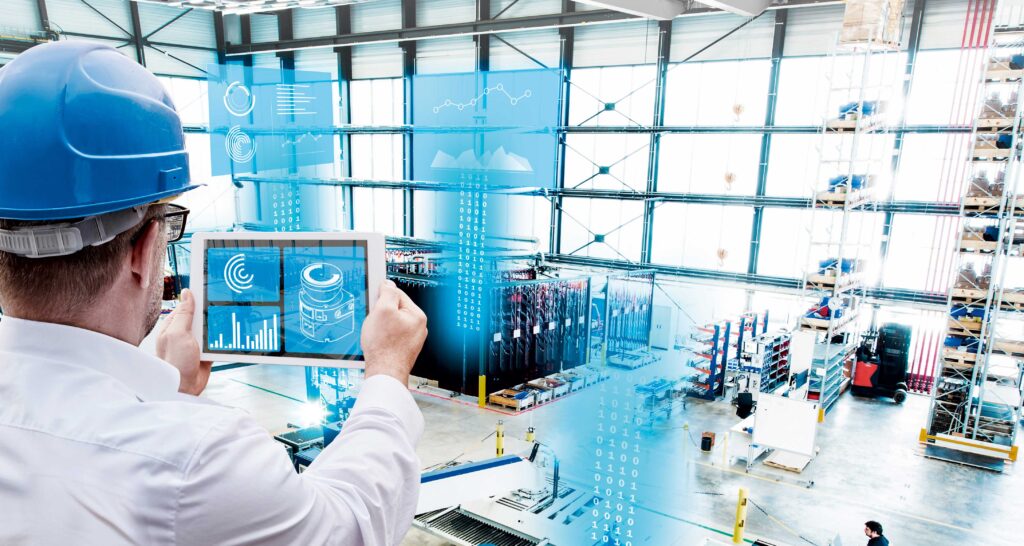Adding a new dimension to the world of sensors with solutions for smart manufacturing and production with digital transformation
Manufacturers are on a digital transformation journey toward the smart factory. Smart manufacturing is a flexible system that can self-optimize performance across a network, self-adapt to and learn from new conditions in real time, and autonomously run production processes.
The smart factory represents a leap forward from more traditional automation to a fully connected and flexible system—one that can use a constant stream of data from connected operations and production systems to learn and adapt to new demands.
To fully realize the digital supply network, however, manufacturers likely need to unlock several capabilities: horizontal integration through the myriad of operational systems that power the organization; vertical integration through connected manufacturing systems; and end-to-end, holistic integration through the entire value chain.
SICK has a Consulting and Digital Solutions team as a dedicated technical team that collaborates with customers in their digital transformation journey. Solutions include smart sensor applications that bridge the gap between the shop floor and the data floor. There are numerous benefits to implementing digital transformation solutions. We’ve listed a few below that our customers have seen with SICK solutions.

Addressing Labor Gaps
Since labor is an important cost driver in most industries, improving labor productivity can drive significant value. This value can be captured via levers that reduce waiting time (e.g., completion of previous process step in manufacturing, delayed delivery of a good in manufacturing, or a prototype in R&D) or increase the speed of workers’ operations by reducing the strain or complexity of their tasks. Human-robot collaboration allows humans and machines to work near each other without risking injury of the workers.
Inventory Challenges
Too much inventory ties up capital, leading to high capital costs. Reducing excessive supply in stock can lower these. Digital transformation levers target the various drivers of excess inventory, such as inaccurate stock numbers that increase sludge, unreliable demand planning necessitating safety stock, or overproduction. Intelligent camera technologies capture the actual fill level of a supply box whether it is stored on the shelf or has been moved to the production line.
Improved Quality
Improving quality is a value driver since scrap and products requiring rework often leads to extra costs (for machine time, material, and labor). These quality inefficiencies are caused by unstable processes in manufacturing, deficient packaging in the supply chain or distribution, and unskilled installation. SPC, advanced process control (APC), and digital performance management can create value.
Digital Transformation Helps Supply/Demand Match
Only a perfect understanding of the customer demand – regarding both the quantity and the product features customers are willing to pay for – maximizes the value captured from the market. Therefore, optimizing the match of supply to the actual demand with digital transformation solutions can seize value potential.
Improved Resources and Processes
Improving a process in terms of material consumption, speed, or yield drives value – in the first case via decreased material costs and via increased revenues through more output in the second and third cases.

Reducing Time to Market
Reaching the market with a new product earlier creates additional value through increased revenues and potential early-mover advantages. Therefore, every digital transformation solution that speeds up the development process such as concurrent engineering or rapid experimentation/prototyping (e.g., through 3D printing) will help drive this value.
Decrease Service Costs
Since the costs of operation are driven by service costs (e.g., maintenance, repair) and machine downtimes (e.g., due to unexpected incidents), offering solutions to decrease these to the customer can open further value potential.
Better Asset Utilization with Digital Transformation
In asset-heavy manufacturing businesses (such as those in the automotive industry), asset utilization is a big value driver. Therefore, remote monitoring and predictive maintenance will play an important role in capturing value. Both are levers to improve asset utilization by decreasing unscheduled downtime.
Ready to get started on your digital transformation journey?





